T
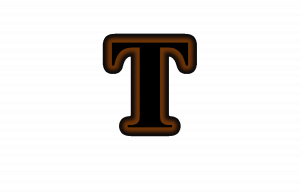
Audio
Listen to an audio version of this page (3 min 32 sec):
Table
|
weyascikewnahtik |
|
Definition: A mathematical table is a systematic or orderly list of values or numbers. It is presented in rows and columns [1].
Example
Table 18.1 The top five Indigenous languages spoken by Indigenous people in Canada in 2021.
| Indigenous language | Number of Indigenous people able to speak this language in Canada in 2021 |
| Cree languages | 86,475 |
| Inuktitut | 40,320 |
| Ojibway languages | 25,440 |
| Oji-Cree | 15,210 |
| Innu (Montagnais) and Naskapi langages | 11,605 |
Note. The data in Table 18.1 was adapted from “Indigenous languages in Canada, 2021” by Statistics Canada, 2023 (https://www150.statcan.gc.ca/n1/pub/11-627-m/11-627-m2023029-eng.htm).
Tally
|
ka asatahk akihcikewin |
|
Definition: Tally marks are used to record the number of items in a set; or used to keep track of data being counted. They usually consist of strokes grouped in fives [1].
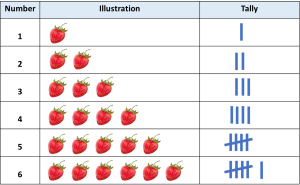
Ten
|
mitâtaht |
|
Definition: It is a counting number that is one more than nine. It is written as 10.

Tens
|
mitātahtaw |
|
Definition: when a number has a decimal point, the second number to the left of the decimal point shows the number of tens.
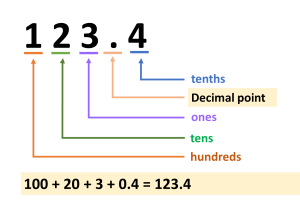
Tenth
|
mwecimitâtaht |
|
Definition: It is the ordinal form of the number ten. It is also written as 10th.
Third
| mwecinistwâw |
|
Definition: It is the ordinal form of the number three. It is also written as 3rd.
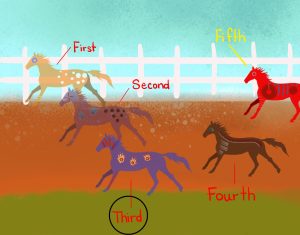
Thirteen
|
nistosâp |
|
Definition: It is a counting number that is one more than twelve. It is written as 13.

Thirty
|
nistomitanaw |
|
Definition: It is a counting number equivalent to three sets of tens. It is written as 30.
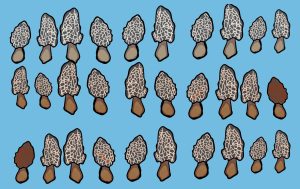
Thousand
|
kihchi mitatahtomitanaw |
|
Definition: It is a counting number equivalent to ten sets of hundreds. It is written as 1000.
Three
|
nisto |
|
Definition: It is a counting number that is one more than two. It is written as 3.
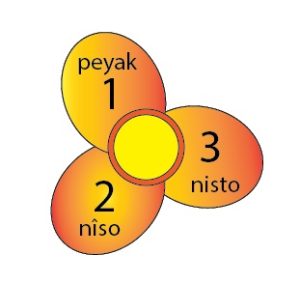
Triangle
|
ē-nistowēyapiskāk |
|
Definition: It is a polygon with three sides and three angles [1].
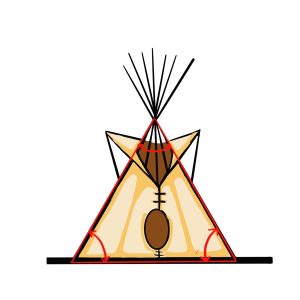
Twelve
|
nîsosâp |
|
Definition: It is a counting number that is one more than eleven. It is written as 12.
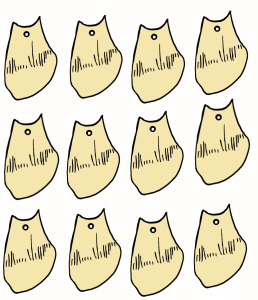
Twenty
|
nîstanaw |
|
Definition: It is a counting number equivalent to two sets of tens. It is written as 20.

Two
|
nîso |
|
Definition: It is a counting number that is one more than one. It is written as 2.


